Samuel De Saboia and The Un-American Beauty
Samuel De Saboia talks all things Un-American Beauty, artistic inspirations, and spirituality.
Samuel De Saboia, the brazilian painter taking the multimedia art world by storm, blurs the lines between art and fashion while expressing a political message. De Saboia’s exhibit, Un-American Beauty, currently held in Los Angeles until October 5, gives the artist a chance to express his most vulnerable self, while showcasing his connection to “black, queer, and rebellious ideas of beauty.”
De Saboia hopes that the exhibit can bring awareness to its audiences, while maintaining the feel of hopefulness for the future, peace and constant love with no bounds. Though only twenty-one years old, the impact De Saboia is making on the art communities, reaching from Sao Paulo to the coasts of California, is breathtaking and inspiring. The passion behind the work speaks for itself, playing on an undermined beauty and giving a voice to the voiceless.
V got a chance to talk with De Saboia, getting an in-depth perspective on both the art and fashion worlds, his deep-rooted inspirations, and the motivations for creating his works.
Angelica Manos: Where did you get your original inspiration?
Samuel De Saboia: For the most part I it has always been there. I made a painting of a chicken when I was 1 or 2 years old and gave it to my parents – they have it till this day. While growing up I had an aunt who was a hyper-realistic oil painter, she loved painting flowers and made an Arum Lilly painting for my parents when I was born. It was white, green, and floated on top of a black silk canvas. I have so many vivid memories of that piece. She died when I was 10 and I was forever touched by that.
Since you’ve grown up in this artistic world, doing your first show at 15, have you seen your perspective of the art world or really beauty in general change, as you’ve progressed and grown?
I’m still an outsider. But I use it to my advantage, I don’t have an artistic background or a family name to rely on. I do things that come from the core. I’m not mad at the kind of artists that come from affluent families, or the college art thing, but those are inexistent realities where I come from. I used to sell Chinese food with my mom so I could pay for college, and did deliveries or cleaned houses by the age of 14. I did it to buy supplies, so art came as an impulse, but I also had a pragmatic approach to it since I could make money and help my parents.
Nowadays the art world, inside and outside of Brazil, is starting to recognize what I do and who I am. But this is the beginning of the process. I work very hard on not losing myself. I don’t want to jeopardize entering into “the real art world,” but I’m also not down to praise a world that never wanted me around in the first place. The same thing goes for beauty, I’ve found mine recently, and empowered myself through it.
In the end it is all about balance, I don’t think that in Brazil there’s enough opportunities for people with the same background as I, but if I managed to get here it is indeed because times are changing. That’s why it’s very important to me to pave the way for others.
How do you feel like you are blurring the lines between art and fashion, when it comes to your work?
By using both as an artistic medium. It’s not only about blurring, but reconnecting the dots that make both one.
How do you incorporate fashion into your pieces?
I watch fashion shows the same way I watch ballets and operas. There’s such a ritualistic energy, it’s pure art taken to a huge consumerist level and it’s really nice to see how refined it can be. From soundtracks to fabrics, colors, textures, it’s all interchangeable with art. I use it as a mood board, a Pandora’s box of historical and technical information.
Do you feel more like an artist or a designer?
I’m a Visual and Multimedia artist, and I believe the line between art and design is not as narrow as it may seem. Art does not have to be functional, unlike design. I create with and by passion.
Or do you feel like you fit into both of those categories?
It’s all about mingling and compartmentalizing when needed.
What are the main differences in beauty ideals between America and Brazil?
Both words holds a very heavy meaning towards it, surrounded by stereotypes and almost too much ignorance. Many Brazilians definitely don’t want to look “American” but then again, what’s their version of America? At the same time everyone that has described a Brazilian person to me in LA always hyper-sexualizes or fetishizes us.
Brazilians want to look natural and are willing to go to extreme measures to maintain their beauty, while Americans don’t make a big deal out of enhancing or reshaping whenever needed. Both sides are very unrealistic in their ideas of beauty. I do feel that in Brazil beauty is understood on a more complex level than just physical appearance. You can be pretty, but then it all can be ruined by your attitude.
How do you incorporate both of those ideals?
I’m a queer black kid moving within countries that were built on the backs of those who look like me, so it’s hard sometimes to play by the same rules of beauty. It’s awesome to recognize your own beauty, but how to relate when
others don’t see it as you do? It’s like people speaking a language that you don’t understand, but you do want to be part of the conversation.
Do you tend to feel yourself more connected to America’s idea of beauty, or Brazil’s?
I feel connected to black, queer, rebellious ideas of beauty. The type of beauty that can be shared without the need of nationalities. Names and borders haven’t helped us much so far. We still have so much to share and learn, and beauty is definitely a part of that.
I know you have said in the past that you see art in a spiritual way. Do you think that your spirituality is what has gotten you to where you are today?
I believe in God and always will, and the faith has definitely had a massive impact on how I create and imagine the possibilities of present and future. It’s definitely one of the reasons why I’m going to “get there” when it comes to the art world. I come from a place where there’s not much hope, but I had and have something to hold on to that gives me strength, wisdom, and resilience to keep going.
Your art touches on so many different messages, from immigration to race to queer identities. What is one message that you want to get across the most to your audience?
Love baby! It’s all about love! My work is made to trigger emotions and reactions. I love when people have introspective moments at my shows – when they cry, when they talk with teary eyes, when they say that something moved them. I believe that’s the moment in which we share for this random amount time, the same emotions I feel daily. It’s like they got inside this tiny door to my brain and had a one on one moment with this unguarded version of Samuel. My art is my most vulnerable self: raw, pure, all over the place. I love when it can freely be what it is.
How was the transition from Brazil into LA’s contemporary art scene?
Actually very nice. I already had a group of creative friends in town, so it was more about getting used to the different time zone. I first stayed for one month to bring and create some of the pieces that are on view. Now I’m setting up everything and finishing the details. I love traveling and changes of scenery so everything is just fine.
Do you feel like culturally you fit in more in the LA environment?
LA is very intense at this point – sometimes it feels like everyone here is famous in their own way. I love that I can dress however and do whatever, and no one seems to judge (not explicitly at least). There is such a huge mix of cultures and cultural influences. It’s as if I’m inside a whole new book and I’m ready to learn. Fitting in is not a necessity – as long as I get to create in a harmonious powerful way – respect is necessary.
Where do you see your art going next?
I have my first show in Zurich next year and for that I want to explore more art structures and the use of unexpected media in art-making. As for myself, I would love to get closer to the fashion world by using my art. I can see myself making movies, collections, exhibitions, textiles… haha, everything actually. There is a lot I still want to learn, but if anything I see my art as the foundation through which I will build my legacy.
What do you hope that this exhibition, Unamerican Beauty, will bring to its audiences?
Awareness. Earlier this month an 8-year-old girl in Brazil was shot by police. I have the obligation to use every platform and medium to not only talk about, but change those realities. I come from a dangerous area, and as I grew up many of my friends were killed. There’s too much violence in the world, too much pain. I don’t want my kids to have it like I had it, so I’ll do everything in my power to give unheard voices the bliss of being heard. To be treated equally should not be seen as privilege.
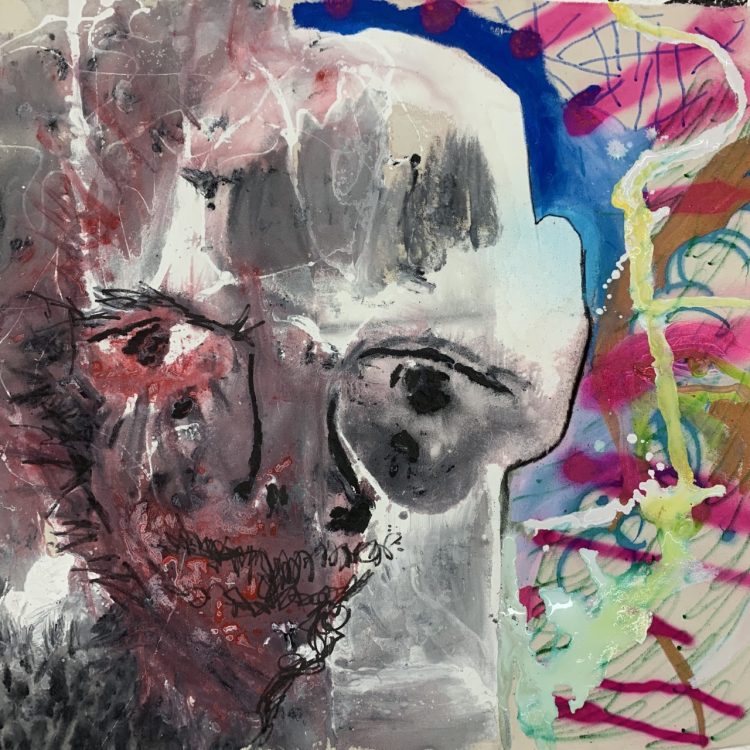
Mixed Media
On Linen
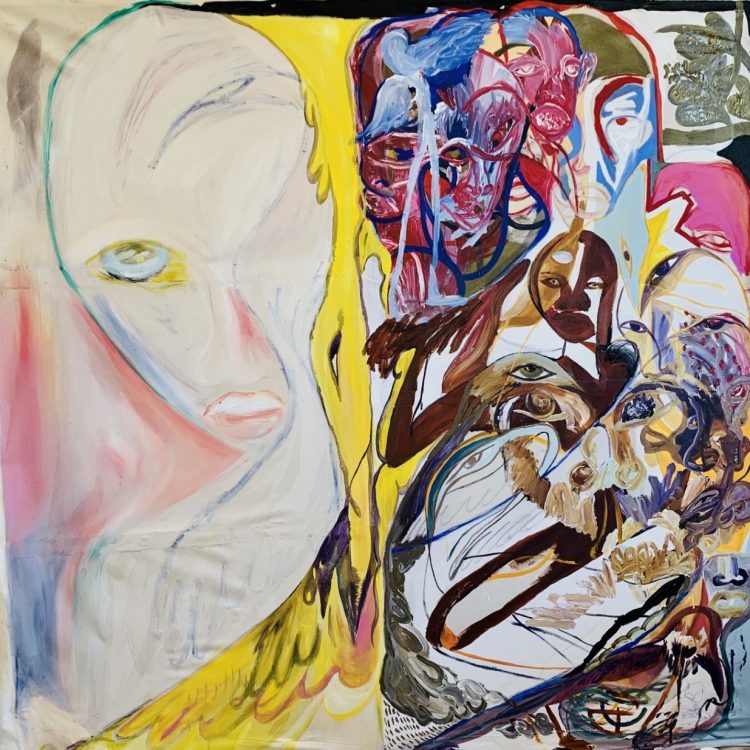
Mixed Media
On Linen
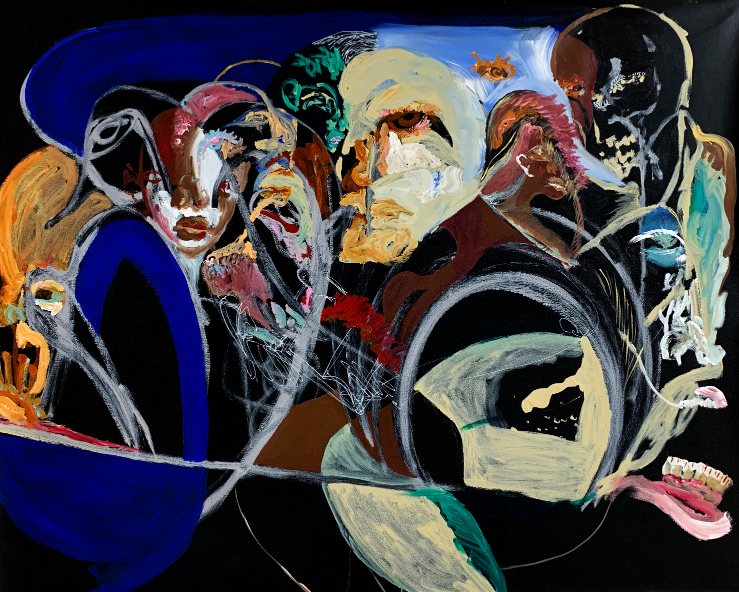
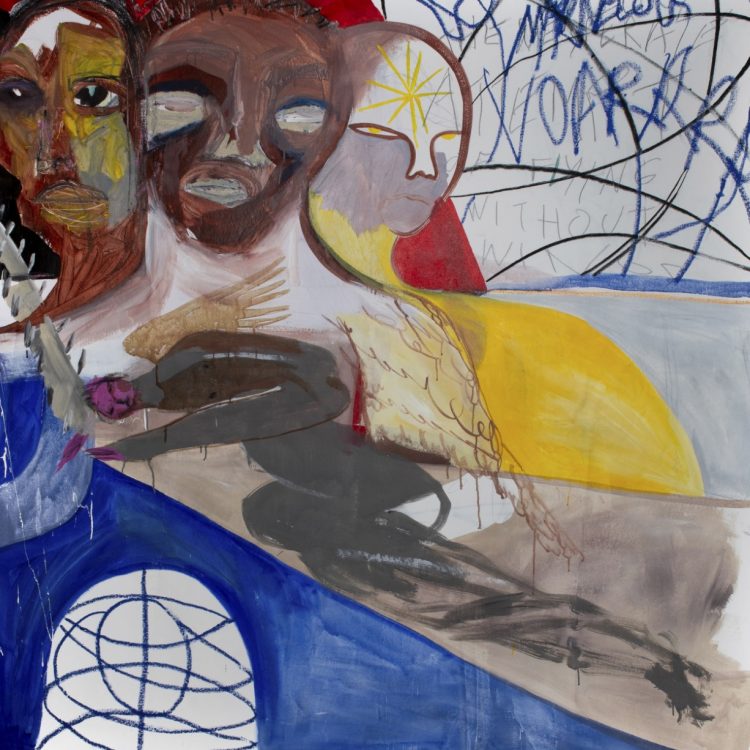
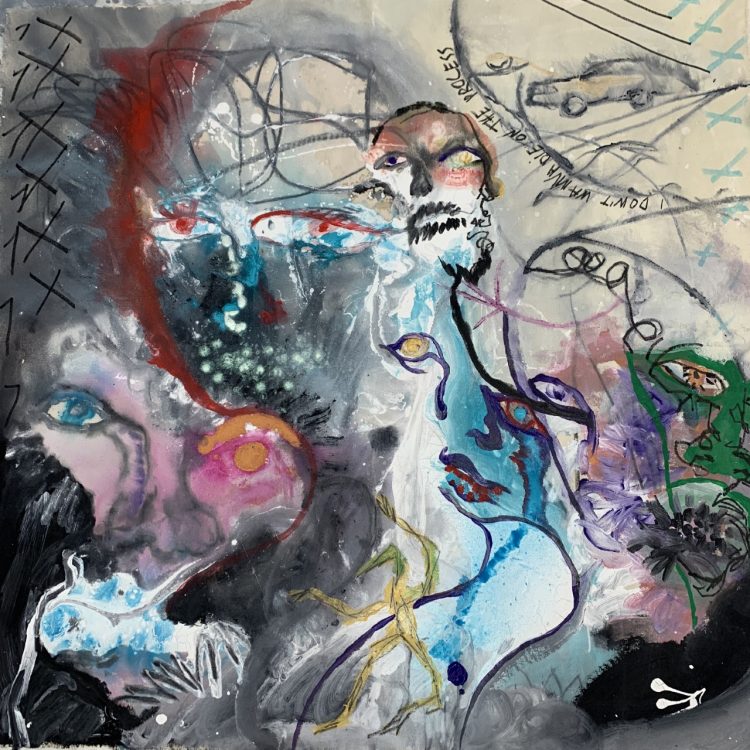
Mixed Media
On Linen